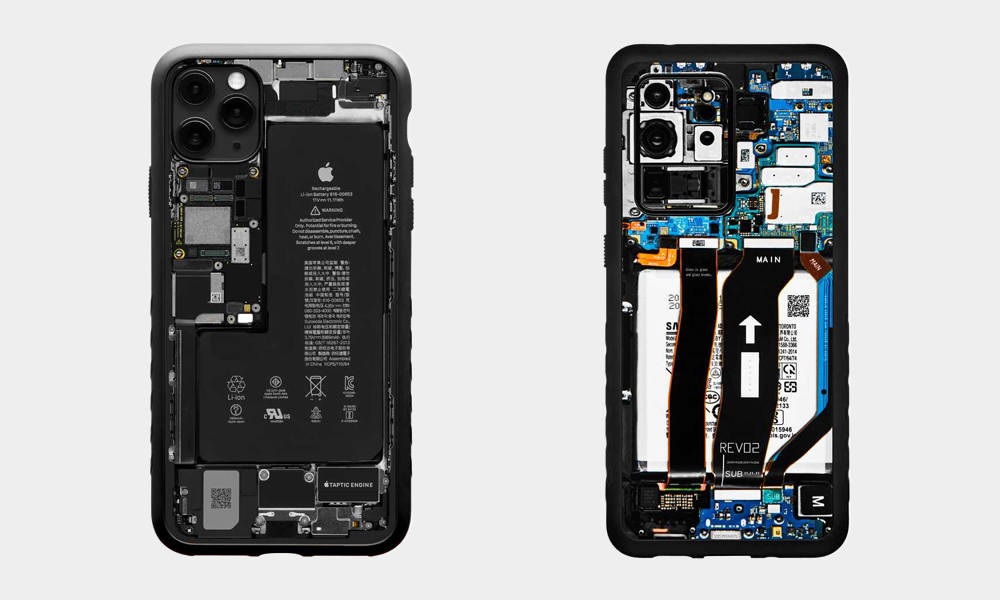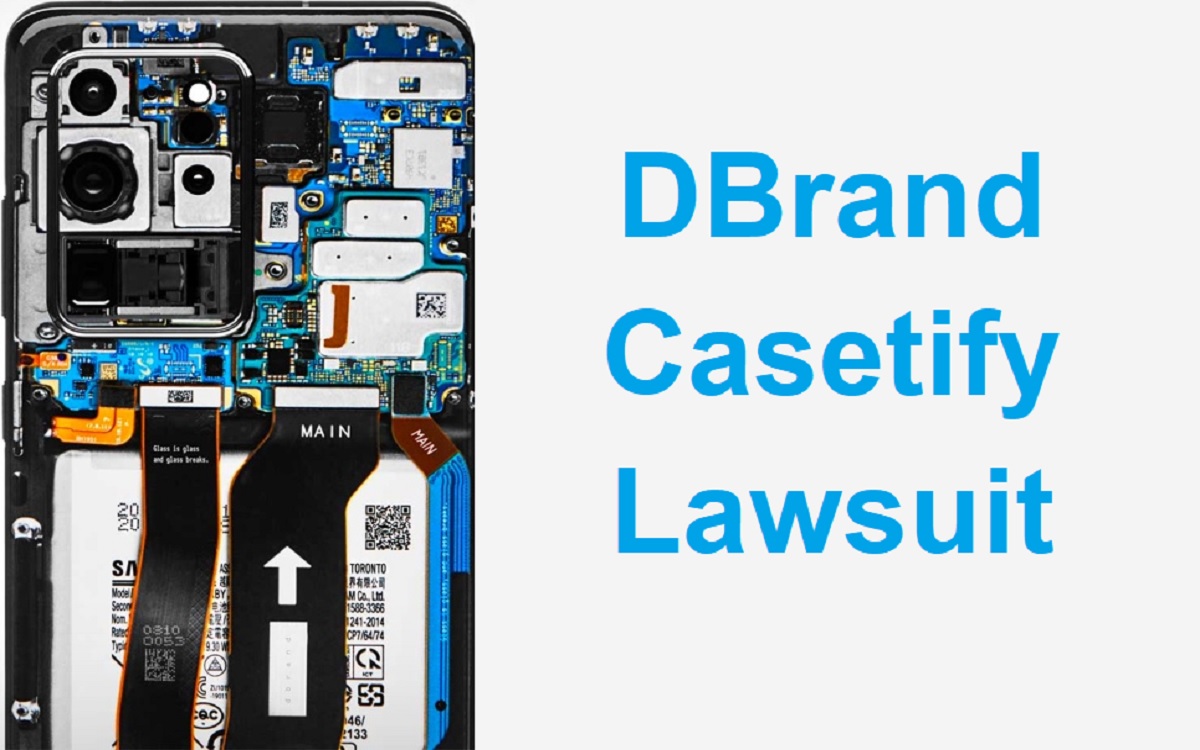Dbrand Takes Legal Action Against Casetify for Alleged Design Theft
What is dbrand casetify lawsuit? Device skin and case maker Dbrand has filed a lawsuit against competitor Casetify, alleging that Casetify copied Dbrand’s unique Teardown device skins and cases designs. This legal spat between two prominent players in the device personalization industry raises questions around intellectual property protection and ethical business practices.
Recent Released: Which Is Best Google Chromecast Or Android 13 TV Box
What Exactly Does Dbrand Allege Casetify Did?
Dbrand claims that Casetify not only copied their Teardown skins and cases designs, which resemble the internal components of electronic devices like smartphones and laptops, but attempted to conceal the infringement as well.
Specifically, Dbrand alleges that:
- Casetify copied multiple designs from Dbrand’s Teardown series of skins and cases over a two year period. These include iPhone, Nintendo Switch, Sony PS5 and other designs.
- Casetify used low resolution images to hide the infringement and bypass image matching searches.
- They removed creator credits and legal disclaimers from the product listings to further obscure the copying.
- Even after being alerted to the alleged infringement in 2021, Casetify continued selling the designs.
Dbrand filed the lawsuit in Canadian court in January 2023, seeking multi-million dollar damages from Casetify.

A Deep Dive Into Dbrand’s Teardown Skins and Cases
To understand this legal dispute better, let’s take a closer look at exactly what Dbrand’s Teardown products are:
Teardown Device Skins
Dbrand’s Teardown skins provide a faux X-ray or exploded view of the internal components of devices like smartphones, tablets, laptops and gaming systems. They are precision-designed and printed to resemble the actual device’s internals as accurately as possible.
Collaborating with popular YouTuber JerryRigEverything, Dbrand guarantees the skins will match 99% of internal components, with a 1% creative margin. The see-through cutouts and color-matched cables and chips deliver a trompe l’oeil effect.
Buyers can customize the skins with different colors and finishes. Popular options include matte, gloss and metal textures.
Teardown Cases
Expanding beyond vinyl skins, Dbrand introduced Teardown cases made of shock-absorbent, scratch-resistant polycarbonate plastic. These cases feature the same internal component designs, creating a cool, geeky aesthetic.
The latest X-ray skins kick the realism up a notch using actual X-ray scans of devices like iPhones and AirPods.
Over the years, the Teardown series has become one of Dbrand’s signature products, popular with tech enthusiasts who want to proudly display “guts” of their beloved gadgets.
Why Casetify’s Alleged Copying Upset Dbrand
As one of the pioneers of the device skins industry, Dbrand invests heavily in research and design to create distinctive products. The company works with manufacturers in Germany, South Korea and the United States to translate complex 3D models into printable vinyl skins and cases.
So Casetify allegedly copying these designs instead of developing their own represents lost profits for Dbrand. Perhaps more importantly, it robs them of recognition as innovators in their field.
While responding to customers on Reddit, Dbrand also suggested that Casetify’s actions could confuse buyers and damage the Dbrand brand image in the long run:
“In our opinion, the most frustrating byproduct of situations like this is customer confusion. If our designs and our branding start showing up places they shouldn’t, there’s a risk that negative brand associations start forming.”
By taking legal action, Dbrand aims to set the record straight on who originally created these clever Teardown concepts.
This Isn’t Dbrand’s First Brush With Big Tech Lawsuits
The popular gadget skin maker is no stranger to legal tussles with giants like Sony and now Casetify.
Dbrand vs Sony
Back in early 2022, Dbrand poked the bear by introducing “darkplates” replacement side panels for the PS5 console, neutralizing the default white aesthetic. While Sony didn’t directly take legal action, their lawyers sent Dbrand menacing cease-and-desist letters. Dbrand ultimately retired the defiant darkplates to avoid a court battle.
Dbrand vs Casetify Lawsuit Details
Now, Dbrand is aggressively pursuing justice in Canadian courts against Casetify for co-opting original designs worth “millions in R&D, production, photography and video” costs according to their lawsuit. They are claiming extensive financial damages from the alleged theft.
While the actual lawsuit filing is not public, Dbrand told The Verge that Casetify has been given opportunity since 2021 to remove the copied skins but has failed to comply. Hence they decided to get litigious in 2023.
What Happens Next in This Legal Battle?
As of now, Casetify has pulled down the contentious Teardown-style skins and cases that sparked Dbrand’s lawsuit, suggesting they may be ready to settle.
In an official statement, Casetify said:
“We have immediately removed the collection in question while we investigate this allegation and connect directly with Dbrand about their claim”
However, if Casetify contests Dbrand’s claims or negotiations fail, a lengthy court battle could ensue. Dbrand would need to prove conclusively to a judge that:
a) They originally created the Teardown concepts b) Casetify deliberately copied unique elements of those designs
c) This copying has resulted in financial harm to Dbrand
If successful, Canadian intellectual property laws entitle Dbrand to receive monetary damages or even a permanent injunction stopping Casetify from selling the disputed products.
The Broader Impact
This legal spat puts the spotlight on lingering issues around intellectual property protection in the consumer electronics skins and cases market. As more players rush into this lucrative space, it highlights the need for policies that balance competition with creator rights.
For small but ingenious companies like Dbrand, legal mechanisms to prevent larger rivals from simply replicating their designs may be necessary to maintain innovation incentives.
However, overzealous IP laws also risk limiting consumer choice. Ultimately, market health depends on new ideas flowing freely while creators still reap fair rewards.
Striking the right balance is something the court proceedings between these two case giants could help define.
Table Summary of Dbrand Casetify Lawsuit Details
| Key Details | |
| Plaintiff | Dbrand |
| Defendant | Casetify |
| Lawsuit Filed | January 2023, Canada |
| Damages Sought | Multi-million dollars |
| Reason | Copyright infringement of Teardown skins & cases designs |
| Current Status | Casetify removed disputed product listings, legal proceedings ongoing |
In Conclusion
Dbrand’s high-risk lawsuit gambit has created waves in the phone case and skin industry. By taking rival Casetify to court over allegedly stolen intellectual property, they have drawn a line in the sand on design plagiarism. It remains to be seen if Dbrand can turn legal pressure into an actual courtroom victory. But the implications may influence competitor ethics and creativity moving forward.
If giants like Dbrand and Casetify cannot resolve such conflicts amicably and equitably, it leaves the door open for many more such legal battles over pixels, polymers and profits. Hopefully, better mutual understanding of creator rights can defuse these tensions. The ball is now in Casetify’s court to respond.
